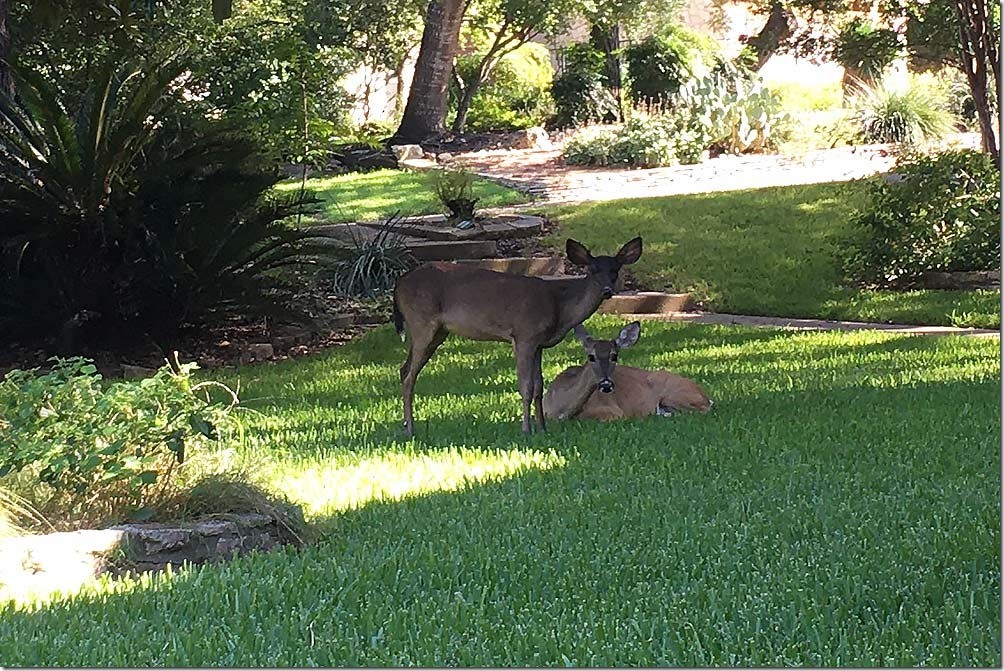
The Black Fawn
Thursday, September 24, 2020
The light has changed. Not just the sun setting earlier, minute by minute; there is something different about autumn light. Warm and golden. Soothing. Recent rains and cooler temperatures have injected new life into everything. Sage and lantana, Pride of Barbados and salvia, explode in deep lavender, yellow, orange and red.
We finally saw the black fawn as we rode our bikes through the neighborhood. She was grazing in a corner yard shielded by tall oaks and plants with another fawn, a buck, and a doe, who must be her mother. She is a dark shadow in sunlight, her coat charcoal, not shiny black. At five months old she stands tall, has filled out, her large oval ears perked up and tilted slightly to each side. Her slender “white tail” is black, tipped with white, not the feathery tail of a whitetail deer. She is beautiful.
It’s strange that she has eluded us for so long when she would stand out easily by her color alone. Over the past weeks we’ve ridden our bikes through the neighborhood and always seen several deer – does, fawns, bucks – scattered in yards, bedded or grazing in the middle of the afternoon or morning. Black whitetail deer or “melanistic deer” have excess amounts of melanin causing the dark coloration. Black deer are the rarest form of whitetail deer but there are more of them in Central Texas than any other place on the planet. This fawn is probably about 5 months old now and was coal black when she was first noticed.
Deer visit our yard sporadically. One or two bucks will walk through the yard in the middle of the day while one or two will show up before dark, or not at all. Some nights a small group gathers on the front lawn, bedding down, grazing in evening shadows as we walk past with Daisy. Water is always there for them. Sometimes a little fawn we call Leon shows up with his mother. As she grazes, we can make out the fawn’s shape lying nearby, his little head sticking up above tall grass, big ears perked up. While most does are traveling with their fawns now, Leon and his mother often show up in the company of a young buck, who may be the doe’s fawn from last year. One night a UPS truck drove into the cove sending the deer flying, but Leon returned and was curled up in the yard when we came back from our walk, his head up, alert, waiting patiently for his mother and big brother.
– Christine Baleshta
